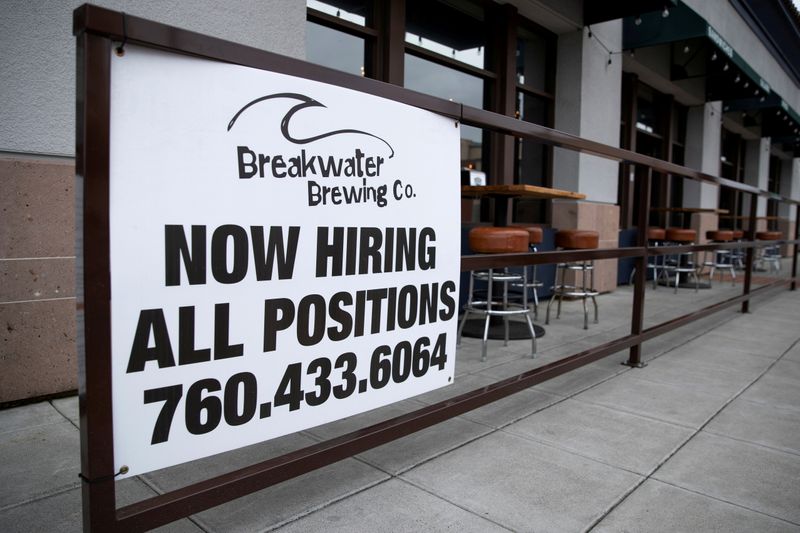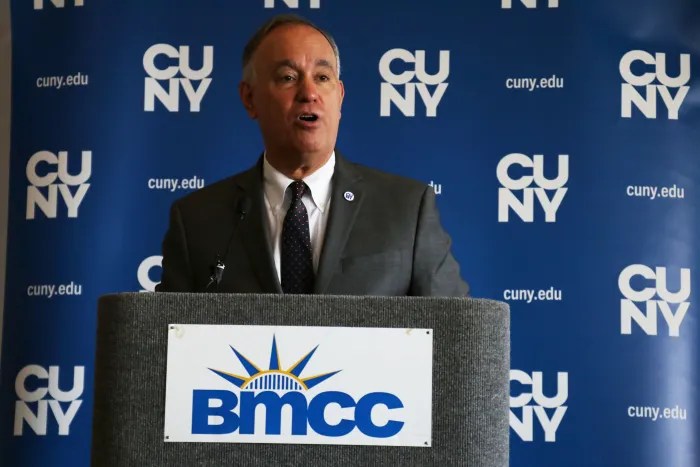WASHINGTON (Reuters) – U.S. job openings surged in October while hiring decreased, suggesting a worsening worker shortage, which could hamper employment growth and the overall economy.
The Labor Department’s monthly Job Openings and Labor Turnover Survey, or JOLTS report, on Wednesday also showed a steady decline in layoffs, another sign that the jobs market was tightening. While the number of people voluntarily quitting their jobs fell, it remained quite high.
“Under normal circumstances, a near record number of job openings would be something worth celebrating,” said Jennifer Lee, a senior economist at BMO Capital Markets in Toronto. “But no employer is in a celebratory mood. It is difficult to fill orders or meet customer demands if there are not enough people to do the actual work.”
Job openings, a measure of labor demand, increased by 431,000 to 11.0 million on the last day of October. This was the second-highest on record. Economists polled by Reuters had forecast 10.4 million vacancies.
The surge was led by the accommodation and food services industry, where vacancies increased by 254,000 jobs. There were 45,000 job openings in the nondurable goods manufacturing industry, while vacancies increased by 42,000 in the educational services sector. But job openings decreased by 115,000 in state and local government, excluding education.
Regionally, the rise in job openings was more pronounced in the South, with moderate gains in the West and Midwest. Vacancies fell in the Northeast. The job openings rate rose to 6.9% from 6.7% in September.
Hiring dropped by 82,000 jobs to 6.5 million in October. The finance and insurance industry accounted for the decline, with a 96,000 drop in payrolls. There were, however, increases in hiring in educational services as well as state and local government education. The hiring rate was unchanged at 4.4%.
There were about 1.5 job openings per unemployed worker in October.
(Graphic: Unemployed to job openings, https://graphics.reuters.com/USA-FED/JOBS/egvbkmeoepq/chart.png)
The government reported last Friday that nonfarm payrolls increased by 210,000 jobs in November, the fewest since last December, after rising 546,000 in October. The unemployment rate fell to a 21-month low of 4.2%.
Though employment is 3.9 million jobs below the peak in February 2020, economists believe that number probably is not a true reflection of the labor market’s health as the shortfall includes people who have retired.
The JOLTS report showed layoffs fell by 35,000 to 1.361 million. The layoffs rate was unchanged at 0.9% for a third straight month.
Quits decreased by 205,000 to a still-high 4 million in October. The decline was in several industries, with large drops in transportation, warehousing and utilities as well as finance and insurance, and arts, entertainment and recreation.
But 21,000 more people quit their jobs in state and local government, excluding education. There were also more quits in mining and logging. The quits rate fell to 2.8% from 3.0% in September amid a large drop in the leisure and hospitality sector.
(Graphic: Americans still quitting their jobs in big numbers, https://graphics.reuters.com/USA-ECONOMY/byprjqqnxpe/chart.png)
“The quits rate in those industries dropped by half a percentage point, signaling some easing in job hopping,” said Nick Bunker, director of research at Indeed Hiring Lab. “In addition to the slowdown in wage growth in the sector seen in recent jobs reports, this trend suggests maybe the advantageous situation for workers in this sector might deteriorate in the months ahead if the current situation continues.”
The quits rate is normally viewed by policymakers and economists as a measure of job market confidence. The still-high quits rate suggests wage inflation will likely remain uncomfortably high for a while. Inflation is way above the Federal Reserve’s flexible 2% target.
(Reporting by Lucia Mutikani; Editing by Andrea Ricci)





















